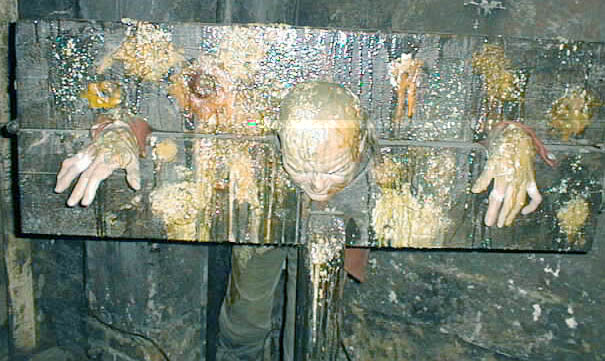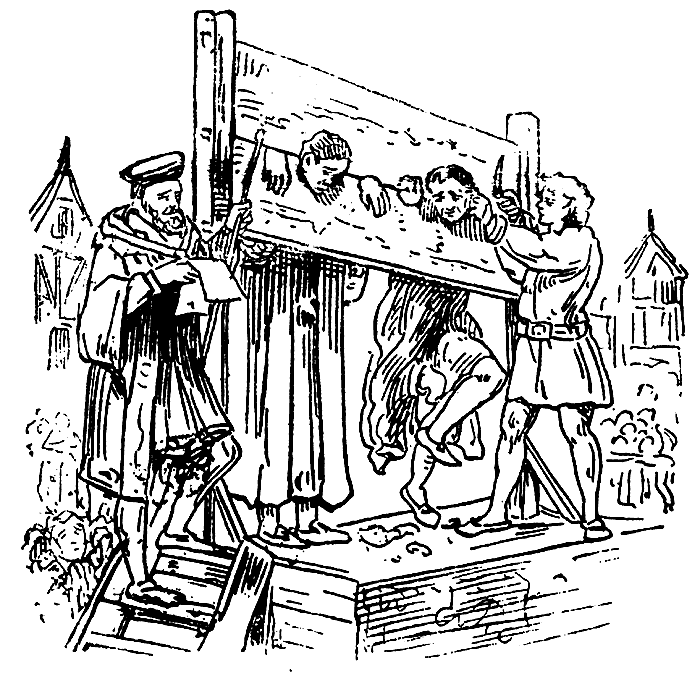

Public humiliation was a major part of punishment in stocks and pillories. These
would always be sited in the most public place available, for example the market
square or village green. In small communities, those being punished would be well
known to everyone else, thereby increasing their shame.
Audience participation was a key element. The helpless victim
would usually be subjected to a barrage of mockery and abuse,
and pelted with any missiles which came to hand. These could
range from rotten fruit and vegetables, mud, excrement, dead
rats, even stones. This was most effective in the pillory, where
the occupant was unable to move his or her head.

The physical discomfort of being confined for long periods in stocks or
pillories should not be discounted. People could be left in the stocks
for days, even weeks, in all weather. Being stuck in the same position would
become very uncomfortable after only a few hours.
The pillory tended to be a
shorter term punishment, a few hours, not usually more than a day. But the
victim�s position, bent over and unable to move his or her head, was considerably
more uncomfortable than the stocks.
As an additional punishment, people in the pillory sometimes had their ears nailed to the boards. Not only was this painful in itself, but the victim�s head was rendered completely immobile. Ears could be torn off by the victim�s futile efforts to dodge missiles hurled by the crowd. If the victim�s ears were still attached to his or her head on completion of the sentence, they would be cut off before the pillory was opened.

Hawthorne spoke of the pillory in his book, "The Scarlet Letter":
�This scaffold constituted a portion of a penal machine which now, for two or three generations past, has been merely historical or traditionary among us, but was held in the old time to be as effectual in the promotion of good citizenship as ever was the guillotine among the terrorists of France. It was, in short, the platform of the pillory; and above it rose the framework of that instrument of discipline, so fashioned as to confine the human head in its tight grasp, and thus hold it up to the public gaze. The very ideal of ignominy was embodied and made manifest in this contrivance of wood and iron. There can be no outrage, methinks -- against our common nature -- whatever be the delinquencies of the individual -- no outrage more flagrant than to forbid the culprit to hide his face for shame.�
